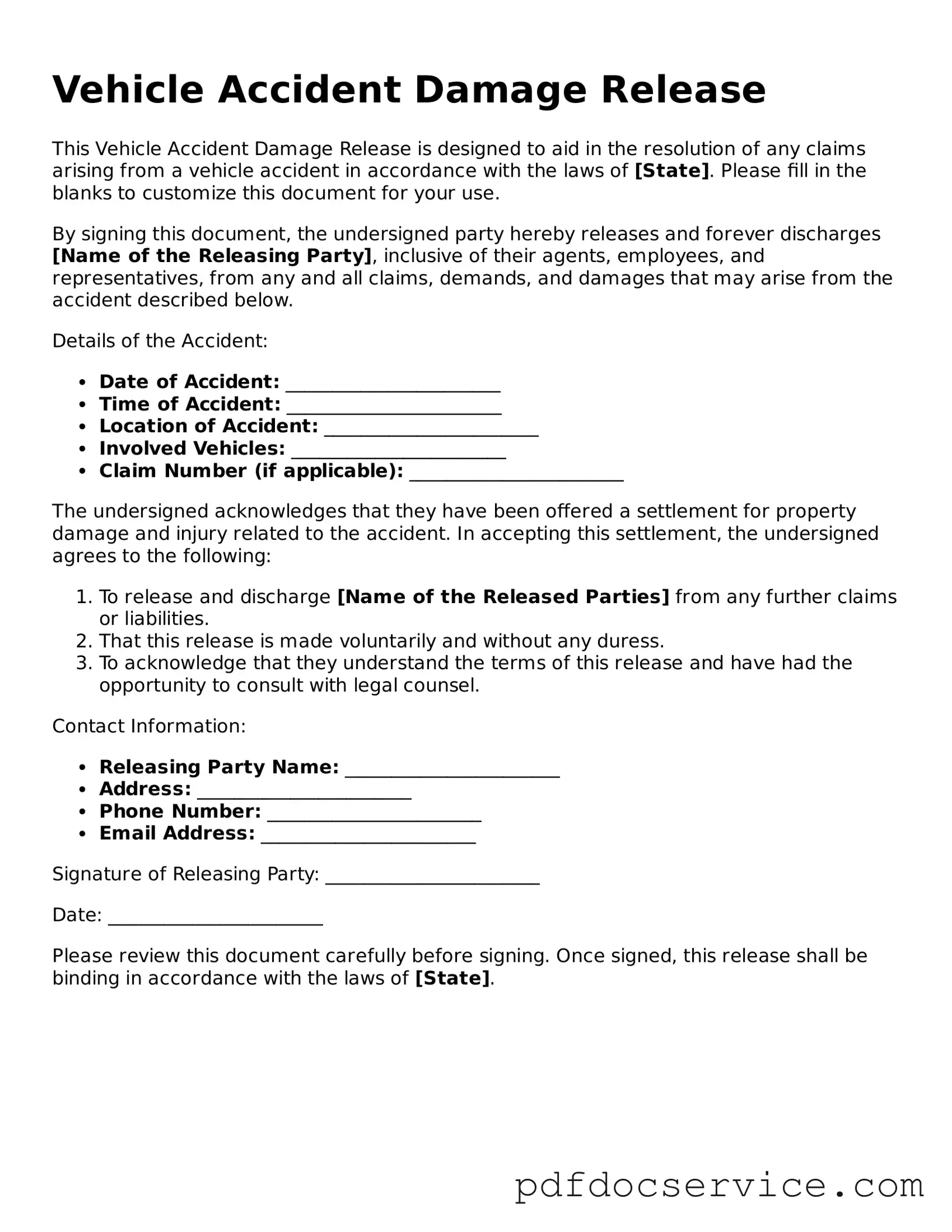A Vehicle Accident Damage Release form is a document that allows a person involved in a vehicle accident to formally release another party from liability for damages. By signing this form, you agree that you will not pursue further claims against the other party for the damages specified.
This form helps clarify that you are satisfied with the resolution of the accident. It protects both parties by ensuring that no additional claims will be made later. This can help avoid disputes and provide peace of mind.
Typically, both parties involved in the accident should sign the form. This includes the driver and any passengers who may have claims related to the accident. It’s important that everyone who has a stake in the damages agrees to the release.
You will need to include details such as:
-
Your name and contact information.
-
The other party's name and contact information.
-
The date and location of the accident.
-
A description of the damages.
-
Any insurance information relevant to the accident.
Yes, once signed, the form is legally binding. This means that you cannot later claim additional damages for the same accident. It’s essential to be sure of your decision before signing.
Can I change my mind after signing?
Generally, once you sign the form, you cannot change your mind. It’s crucial to fully understand the implications of signing before you do so. If you have doubts, consider consulting with a legal professional.
If you choose not to fill out the form, you may retain the right to pursue further claims against the other party. However, this may lead to disputes or complications down the line, especially if you have not reached an agreement on damages.
You can usually obtain a Vehicle Accident Damage Release form from your insurance company, legal advisors, or online legal resources. Make sure to use a reliable source to ensure the form meets your needs.
After filling out the form, both parties should keep a copy for their records. It’s also wise to inform your insurance company about the signed release, as it may affect your claims process.
